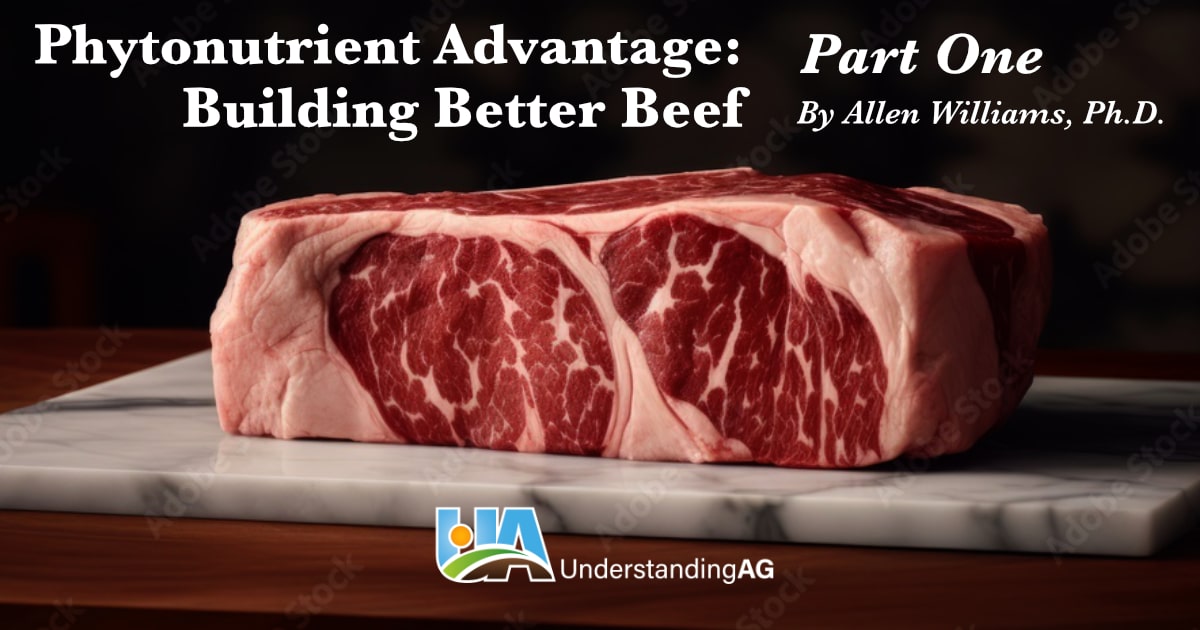
Research conducted by a science team headed up by Dr. Stephan Van Vliet had a goal of performing deep metabolic and nutritional profiling of grass-fed beef samples submitted by farms in various regions of the U.S. Nutritional profiling included fatty acids, amino acids, phytochemicals, vitamins, and oxidative stress markers. To fully understand the contributions of soil health parameters, plant species diversity, and the actual absorption of nutrients in the animal’s gut, researchers collected and analyzed soil, plant and animal fecal data. Additionally, beef samples were analyzed for their complete nutritional profile. This data provided significant insight into the nutritional composition of meat and the metabolic health of the animals.
The data is benchmarked against the average values for typical feedlot grain-fed beef samples. The grain-fed beef samples were collected from feedlots in the Nutrient Density Project database.
This nutritional research trial is among the most thorough ever conducted. Most nutritional research starts and ends with the actual food products that people consume. This research examined the soil that grew the plants the animals ate, the plants themselves, the fecal matter of the animals, the end-product, and even includes human clinical trials.
Outline of data collected:
- Soil – Physical, chemical and biological characteristics
- Plants – Diversity, phytonutrient profile, everything the animals were observed eating
- Fecal Matter – Collecting samples from fresh manure patties
- End Product – Grass-fed beef compared to conventional feedlot beef
- Human Clinical Trials
What are Phytonutrients?
Phytochemicals are naturally occurring, bioactive compounds derived from plants that have powerful antioxidant and anti-inflammatory effects in both animals and humans. Numerous studies have found that phytochemicals play a key role in the prevention and management of many chronic diseases.
Phytonutrients include classes of nutritive compounds such as carotenoids, terpenes, phenols, and tocopherols—scientific words for nutrients that are profoundly important to our lifetime health. All disease and disorders start with inflammation in the body. If we can routinely consume foods that are high in phytonutrients, we can effectively reduce inflammation and greatly improve our overall health.
Key Benefits of Phytonutrients:
- Anti-inflammatory and antioxidant effects in the cells of our body
- Scavenging of reactive or toxic chemicals from our body.
- Enhances the gut absorption of essential nutrients and their stability in our body.
- Acts as selective growth factors for beneficial gastrointestinal bacteria.
- Encourages and facilitates beneficial oral, gastric, and intestinal bacteria.
- Inhibits deleterious (bad) intestinal bacteria.
Key Findings from Prior Research:
- Higher amounts of omega-3 fatty acids and CLA’s in our diet.
- Improved cardiovascular health.
- Improves mitochondrial/energy metabolism.
- Positively impacts our gut microbial population diversity which improves health and metabolism.
- Powerful anti-inflammatory effects linked to reduced risk of Parkinson’s disease and cancers.
- Reduced oxidative stress and anti-tumor activity.
- Significantly higher Vit E, Vit C, Vit B3, B5, B6.
- Higher in favorable fatty acids, such as omega-3 and CLA.
- Decreased risk of diabetes and cardiovascular disease.
Key Steps in the Research Process:
- Sample collection at the farm. This included soil samples, plant samples, fecal samples and beef samples after animals were harvested.
- Sample processing to prepare for analysis.
- Massspectromitry analysis of the samples using Liquid Chromatography with Tandem Mass spectrometry.
- Individual metabolite identification (actual phytonutrients).
- Bioactivities and pathway analysis.
- Data interpretation of amino acid metabolism, phytonutrients, fatty acid metabolism, vitamin and nucleotide metabolism, microbiome metabolism.
These key steps represent an in-depth, scientific analysis—analysis that goes far above and beyond any prior nutritional analysis ever attempted.
In part two of this series, we’ll look at even more detailed evidence from the study regarding the link between the health of our soils, our plants, our animals and our health.
